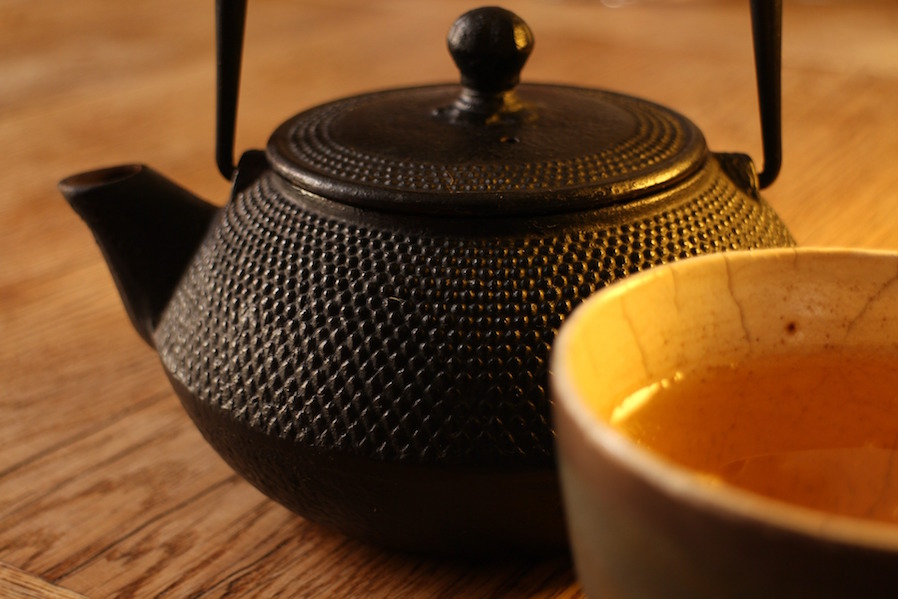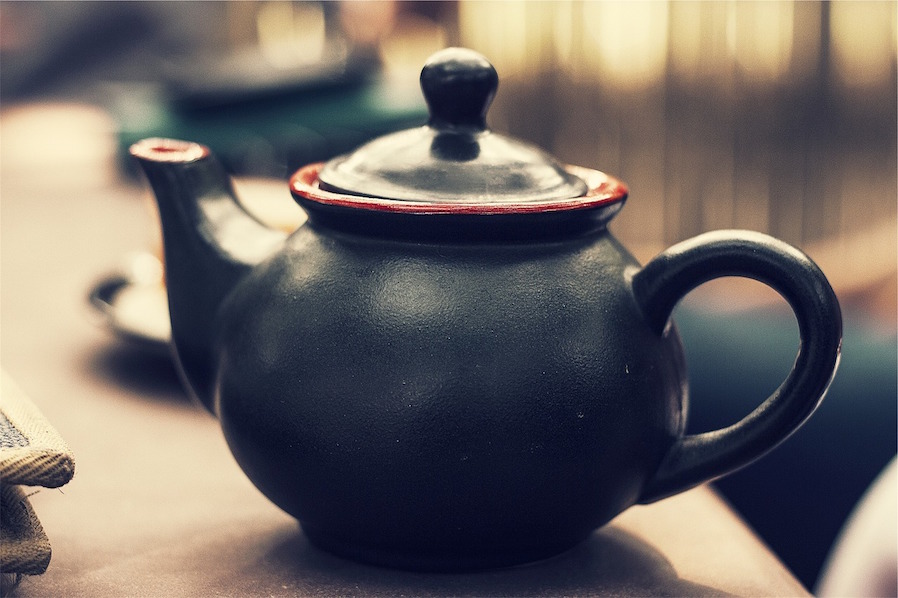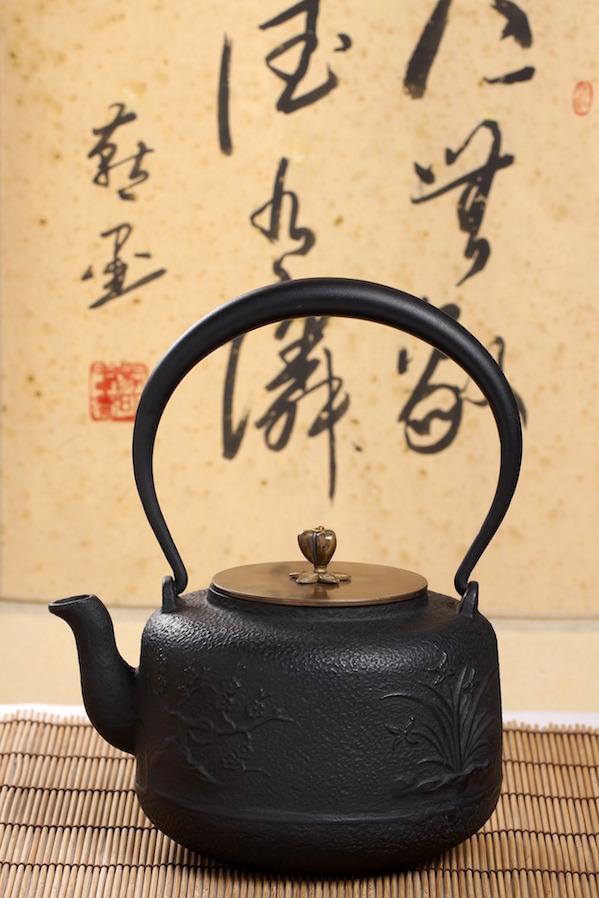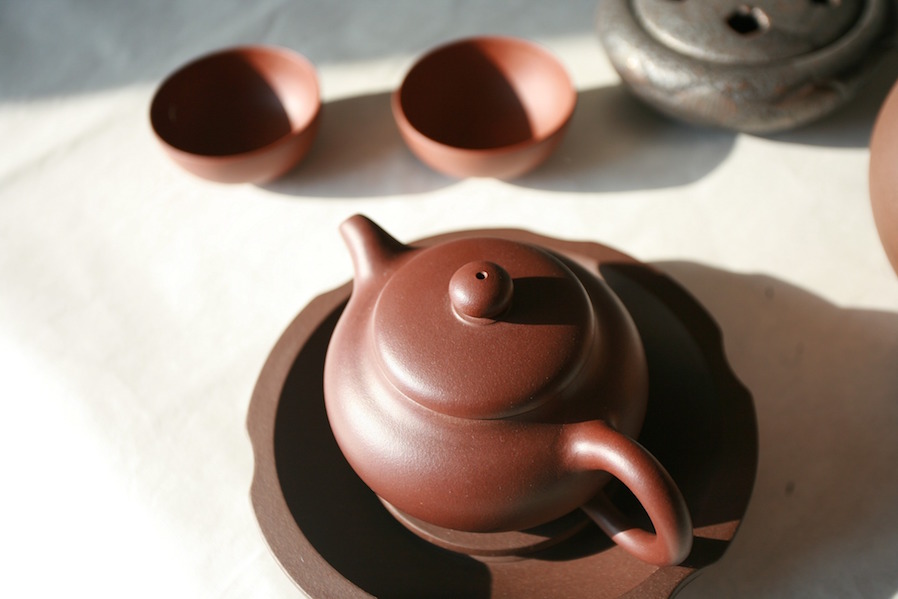Céramique, porcelaine, verre, chocolat : quels matériaux choisir pour sa théière?

La céramique :
Nous parlions de travail d’argile lorsque nous expliquions dans d’autres billets l’histoire des théières. La céramique est le matériau « de tous les jours », de même que le matériau le plus ancien, les premières théières yixing étant façonnées à même cette argile. La céramique peut être vernie (elle l’est souvent de nos jours) ou non vernie. La fameuse théière de style yixing est une théière de céramique non vernie : les saveurs du thé s’imprégnaient donc dans le matériau à chaque infusion, rendant chaque tasse de thé plus savoureuse au fil des utilisations. Cependant, il fallait limiter la théière à un seul type de thé. Car si vous vouliez accumuler les saveurs délicates d’un thé blanc, y infuser ensuite un thé noir détruirait votre bon travail en surplombant les saveurs!
La porcelaine :
Matériau luxueux par excellence (encore aujourd’hui, la porcelaine chinoise blanc et bleu est un symbole d’élégance), la porcelaine devint le choix populaire en Europe, car seule la classe aisée pouvait s’offrir du thé – et voulait utiliser les matériaux les plus fins et les mieux travaillés.
Le verre :
Les théières en verre transforment l’infusion de thés parfumés en véritable spectacle! À travers les parois transparentes, vous pourrez voir vos feuilles de thé vert gonfler ou se ratatiner, voir les couleurs de votre thé aux fraises changer vers le rouge, voir votre thé en fleur développer doucement ses saveurs… Et si vous avez du thé en fleur, d’ailleurs, une théière de verre est le contenant parfait pour en faire du thé glacé!
L’inconvénient : le verre devient extrêmement chaud. Attention à ne pas vous brûler!
Le chocolat :
Une théière en chocolat? Le concept n’a pas été inventé pour rehausser les thés chocolatés, mais plutôt pour devenir une métaphore de l’objet inutile. La logique ici : une théière en chocolat ne pourrait être utilisée, puisqu’elle fondrait au moment où on y ajouterait de l’eau bouillante. Des expériences effectuées en l’an 2001 prouvèrent cette impossibilité; sept ans plus tard, d’autres scientistes prouvèrent le contraire – à condition que l’épaisseur de la théière soit au-dessus de 1 cm. Ou d’y garder du thé glacé, bien sûr.



